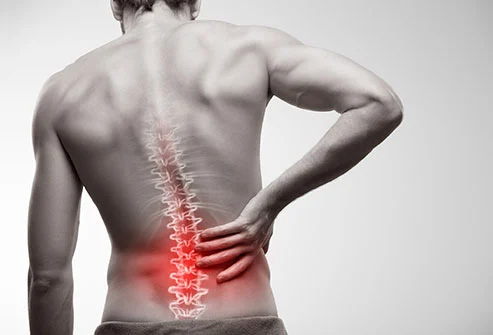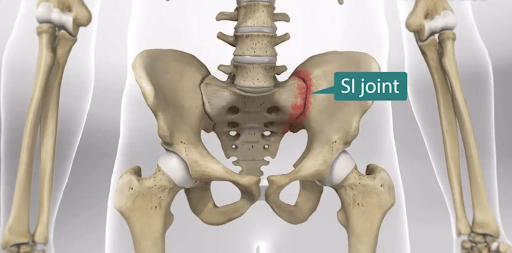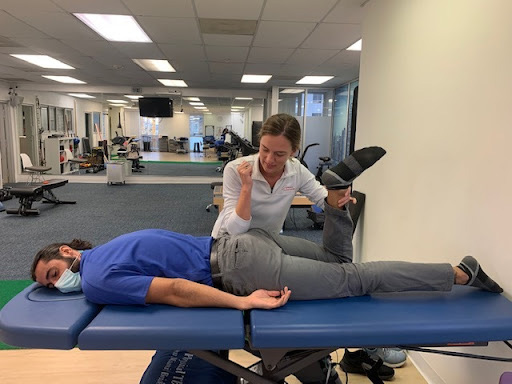Physical Therapy for Low Back Pain
Having low back pain? Don’t worry, you’re not alone. Low back pain is the most common diagnosis treated by physical therapists and more than 70% of people experience low back pain at some point in their lives. Although low back pain can feel debilitating, it is rarely serious or life-threatening. Physical therapy can help improve and restore your strength and mobility as well as reduce pain. At Symmetry Physical Therapy, we are specially trained in assessing the cause of your low back pain and creating a treatment plan for you so you can get back to doing what you love. Click here to schedule an appointment with us at our clinic located in Downtown Miami/Brickell! Keep reading below to find out what your experience will be with us.
**Please note that if your low back pain is accompanied by any of the following symptoms, you should visit your local emergency department immediately. This may be indicative of a condition called Cauda Equina syndrome.
- Numbness/tingling in groin/upper inner thigh region
- Changes in bowel/bladder function

What is Causing My Low Back Pain?
Your physical therapist will spend the first day performing an initial evaluation to determine the cause of your low back pain. When assessing back pain, it is important to know what the diagnosis is but your physical therapist will also evaluate you based on how you present as an individual. The first step is a thorough history which will ask about any previous injuries, surgeries, or medical conditions as well as questions about aggravating activities, your lifestyle and activity level. Come prepared to answer questions such as:
- How did the pain start?
- How long and how often have I been experiencing pain?
- What makes the pain better/worse?
- Where do I feel the pain?
- Do I experience numbness and tingling?
- What time of day is my pain better/worse?
Next, your therapist will perform movement and mobility assessments, strength testing, postural analysis, and special tests. From here, Structures causing your back pain will be identified. Your therapist will observe any activity that is important to you to perform. These include sitting, walking, standing, and other forms of mobility. By observing your different postures in these positions, your therapist can determine what muscles you over or underuse. They can then assess further.
Your therapist will also test your ability to hold positions as well to determine how strong these muscles are and if there are any muscular imbalances. Muscle imbalances can present as one leg or side of the trunk being weaker than the other or that one muscle is tight and the opposite muscle is weak. Stretching can help but your physical therapist will determine the root cause of the muscle tightness you may be experiencing and help you learn how to strengthen the appropriate muscles.
Core strength is another large contributor to low back pain. Your physical therapist will take you through strengthening exercises that are appropriate for your level. You can have a six-pack and still not have activation in your deep core stabilizing muscles. These are so important in protecting your low back from injury.
What Are Some Common Low Back Pain Conditions that You Treat?
There are many different diagnoses related to low back pain. Four of the most common diagnoses for low back pain are a herniated disc with/without sciatica, low back strain/sprain, spondylolysis/spondylolisthesis, and SI joint dysfunction. These conditions do not typically require surgery.
Physical Therapy for Herniated Discs
A herniated disc occurs when the outer part of the disc (a round cushion in between the bones of the spine) tears and the inner, gelatin-like center leaks out. This is similar to squishing a jelly donut. When pressed, the jelly will leak out. When the inner part leaks out, it can aggravate a nerve and cause low back pain and sometimes even pain or numbness/tingling down the leg (sciatica). Your physical therapist will teach you proper core/hip strengthening, stretches, and nerve glide to help ease these symptoms.
Physical Therapy for Low Back Strains or Sprains
A low back strain occurs when the fibers of the muscles are stretched beyond their limits and tear. A low back sprain occurs when the ligaments (what holds bones together) are torn. Both are very common and can occur with sudden movement or due to gradual overuse. Symptoms can vary but most people experience pain in the low back/buttock region, stiffness and loss of range of motion in low back region, and inability to maintain sustained postures. Treatment will include soft tissue techniques to reduce tension and swelling. They may also include gentle core and hip strengthening exercises to help reactivate muscles that may have become inhibited over time.
Physical Therapy for Spondylolisis
Spondylolisis occurs when stress fractures form in the connecting part of the vertebrae (bones of the spine). This causes the bone to slip forward. Overuse and repetitive stress commonly cause this. Common symptoms include pain and stiffness in the low back, and pain and stiffness in the back of the thighs. Your therapist will teach you how to sit and stand in non-aggravating positions as well as address underlying hip and core strength deficits to provide more support to the spine.
Physical Therapy for SI Joint Dysfunction
SI joint dysfunction occurs when there is improper movement at the joint between the sacrum (bottom part of the spine) and pelvis (see below). Symptoms may include low back pain, hip and/or buttock pain, numbness and tingling in LE. Some common causes of SI joint dysfunction are repetitive stress on the joint and pregnancy. Your therapist will assess how your pelvis moves separately from your legs. They will determine if there is an imbalance in movement on one side compared to the other. Your therapist can address imbalances in the pelvis through manual therapy techniques and address core and hip strength and mobility deficits that may be contributing to the imbalance.
No matter what type of low back pain you’re experiencing, it’s important that you continue to stay active. You should modify activities as needed, and avoid prolonged bed rest as this can be counterproductive to your recovery. Click here to schedule an appointment with us to find out more how to manage your low back pain!
We’ve got your back!


